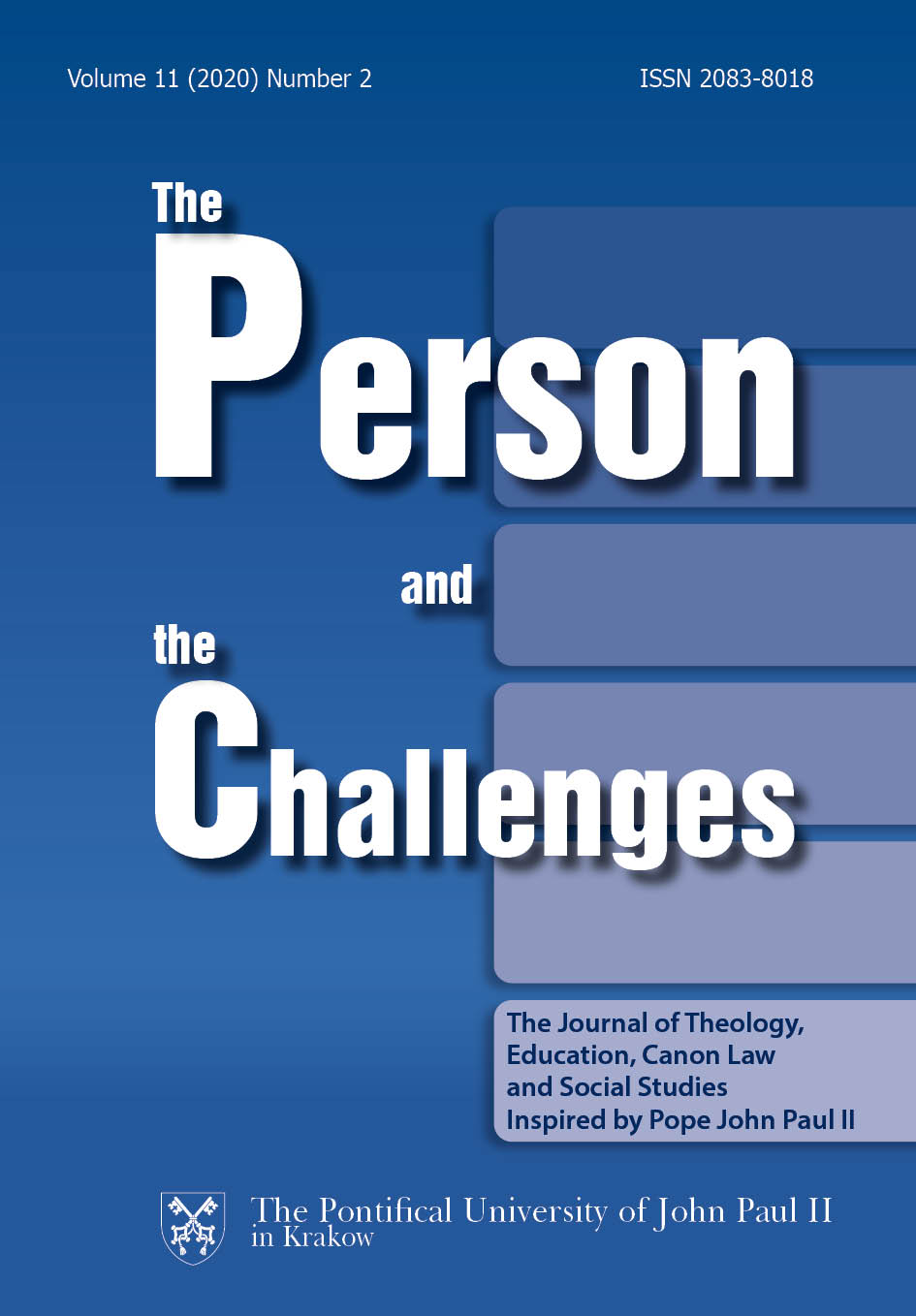Vulnerability in Facing the Covid-19 Pandemic in the Light of Relational Trauma
DOI:
https://doi.org/10.15633/pch.3747Słowa kluczowe:
Coping with pandemic, aggression, affect regulation, child development, traumatic experiencesAbstrakt
Coping with the COVID-19 pandemic has revealed different ways individuals react to frustrations they have experienced. Many times we have witnessed an increased level of aggression in interpersonal relationships and in the general social context. We find that there are some differences in coping and responding according to gender, with men showing a higher level of vulnerability and risk of inappropriate regulation and expression of anger when frustrated. To a certain extent, the answer to why this happens is provided by neuroscientific research, which shows that already at an early age, boys’ brains develop differently from girls’, as it takes more time to develop their stress-regulating mechanism; consequently, due to slower development, boys are more vulnerable to early stressful situations and have more problems with self-regulation of affective states at this early age. Together with the possibility of relational trauma in the family, to which many children are exposed from the earliest period of their lives and which plays an important role in providing a context for the development of affect regulation, that means that boys and men are even more vulnerable and sensitive to stress, aggression and trauma later in life. It makes sense to take these neuroscience findings into account when building an understanding of responses to stressful challenges, such as coping with a pandemic, as well as when planning appropriate models to help individuals cope with different types of stress.
Bibliografia
Avsenik Nabergoj I., Children Without Childhood: The Emotionality of Orphaned Children and Images of Their Rescuers in Selected Works of English and Canadian Literature, “Acta Neophilologica” 50 (2017), pp. 95–135.
Briere J. N., C. Scott, Principles of Trauma Therapy: A Guide to Symptoms, Evaluation, and Treatment (DSM-5 Update), Los Angeles, CA, 2015, Sage Publications.
Carter V., M. R. Myers, Exploring the risk of substantiated physical neglect related to poverty and parental characteristics: A national sample, “Children and Youth Services Review” 29 (2007), pp. 110–121.
Chaffin M., The Changing focus of child maltreatment research and prectice within psychology, “Journal of Social Issues” 62 (2006), pp. 663–684.
Cohen J. A., A. P. Mannarino, E. Deblinger, Treating trauma and traumatic grief in children and adolescents, New York 2006, Guilford Press.
Cozolino L. J., The neuroscience of psychotherapy: Healing the social brain, New York 2017, W. W. Norton & Company.
Diseth T. H., Dissociation in children and adolescents as reaction to trauma – An overview of conceptual issues and neurobiological factors, “Nordic Journal of Psychiatry” 59 (2005), pp. 79–91.
Fisher H. E., Anatomija ljubezni (Anatomy of love), Ljubljana 2017, UMco.
Fonagy P., G. Gergely, E. L. Juirist, M. Target, Affect Regulation, Mentalization, and the development of the self, New York 2007, Other Press.
Frewen P., R. Lanius, Healing the traumatized self: Consciousness, neuroscience, and treatment, New York 2015, W. W. Norton & Company.
Kaplow J. B., C. S. Widom, Age of onset of children maltreatment predicts long-term mental healh outcomes, “Journal of Abnormal Psychology” 116 (2007), pp. 176–187.
Ogden P., J. Fisher, Sensoriomotor psychotherapy: Interventions for trauma and attachment, New York 2015, W. W. Norton & Company.
Osredkar M. J., Sacrifice in Relationship, “Bogoslovni vestnik” 76 (2016), pp. 265–276.
Osredkar M. J., Forgiveness as the Summation of the Gospel Ethics of God, “Bogoslovni vestnik” 78 (2018), pp. 313–323.
Rothschild B., The body remembers, Volume 2: Revolutionizing trauma treatment, New York 2017, W. W. Norton & Company.
Schmelzer G. L., Journey through trauma: A trail guide to the 5-phase cycle of healing repeated trauma, New York 2018, Avery Publishing Group.
Schore A. N., The Science of the Art of Psychotherapy, New York 2012, W.W.W. Norton & Company.
Schore A. N., Affect regulation and the origin of the self: The neurobiology of emotional development, New York 2016, W. W. Norton & Company.
Schore A. N., Right Brain Psychotherapy, New York 2019, W. W. Norton & Company.
Schore A. N., The Development of the Unconscious Mind, New York 2019, W. W. Norton & Company.
Siegel D. J., The developing mind: How relationships and the brain interact to shape who we are, New York 2015, Guilford Press.
Siegel D. J., Mind: A journey to the heart of being human, New York 2017, W. W. Norton & Company.
Steele K., S. Boon, O. van der Hart, Treating Trauma-Related Dissociation: A Practical, Integrative Approach, New York 2016, W. W. Norton & Company.
Pobrania
Opublikowane
Numer
Dział
Licencja
Twórca oświadcza, że służą mu prawa autorskie do utworu i że nie są ograniczone w zakresie objętym niniejszym oświadczeniem oraz że utwór jest dziełem oryginalnym i nie narusza praw autorskich innych osób.
Twórca zezwala Uniwersytetowi Papieskiemu Jana Pawła II w Krakowie na nieodpłatne, niewyłączne i nieograniczone w czasie korzystanie z utworu, to jest:
- utrwalanie i zwielokrotnianie: wytwarzanie egzemplarzy utworu techniką drukarską, reprograficzną, zapisu magnetycznego oraz techniką cyfrową;
- obrotu oryginałem albo egzemplarzami, na których utwór utrwalono (wprowadzanie do obrotu, użyczenie lub najem oryginału albo egzemplarzy, publiczne wystawienie, wyświetlenie, a także publiczne udostępnianie utworu w taki sposób, aby każdy mógł mieć do niego dostęp w miejscu i w czasie przez siebie wybranym);
- włączenie utworu w skład utworu zbiorowego;
- udzielanie przez Uniwersytet Papieski Jana Pawła II w Krakowie sublicencji Creative Commons Uznanie autorstwa 4.0 Międzynarodowe (CC BY 4.0)
Uniwersytet Papieski Jana Pawła II w Krakowie udostępnia utwór na Platformie Czasopism należącej do uczelni, na licencji Creative Commons Uznanie autorstwa 4.0 Międzynarodowe (CC BY 4.0). Tym samym uprawnia wszystkich zainteresowanych do korzystania z utworu pod następującymi warunkami:
- zostanie podany autor i tytuł utworu,
- zostanie podane miejsce publikacji (tytuł czasopisma i adres internetowy do oryginalnie opublikowanego utworu).

